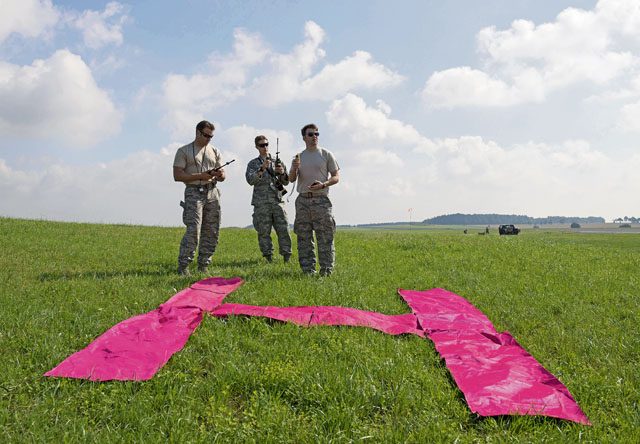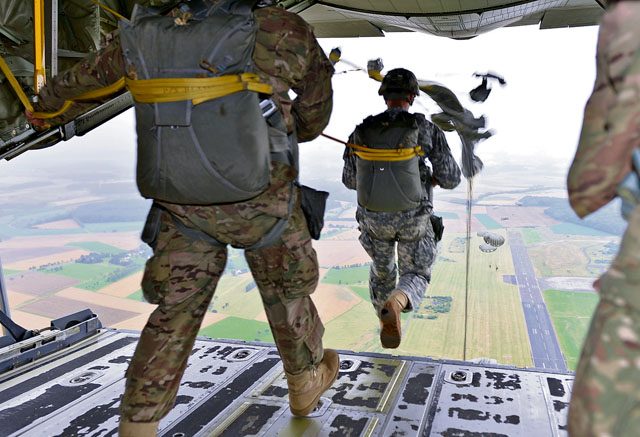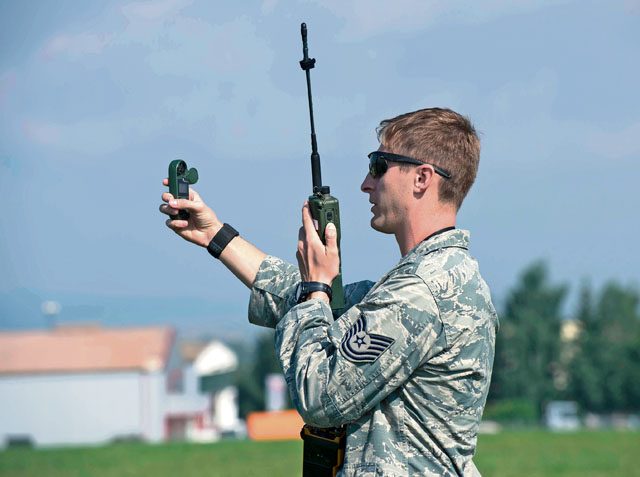
Twice a year, several participating countries come to together on Ramstein to build relations, share knowledge and offer paratroopers the opportunity to practice high-altitude, low-opening and static-line jumps.
Multiple organizations play an instrumental role in preparing for the multinational exercise, one of them being the contingency air traffic controllers, a portion of the drop zone support team.
“International Jump Week is for us to compare tactics, techniques and procedures with our foreign partners,” said Master Sgt. Dustin Guiducci, 435th Contingency Response Group contingency air traffic controller and DZ controller. “It’s a huge partnership-building capacity event. It allows us to all work together to see how they do business and for them to see how we do business. (The DZ support team is) a very, very small piece.”
Tech Sgt. Jeremy Francisco, 435th Contingency Response Squadron contingency ATC in training, said the course is common for Soldiers in combat career fields; however, attending as nonbattlefield Airmen is rare.
“There are only seven contingency air traffic controllers in the entire Air Force,” Guiducci said.
One of four CRGs in the Air Force, the 435 CRG contains all seven of the contingency ATCs. Guiducci stated they send ATCs through the course depending on mission needs.
The contingency ATCs conduct site surveys, set up visual references and coordinate pickup of the parachutes and medical support.
“Not only do we talk during the mission, we coordinate prior to the mission,” Francisco said. “We’re providing guidance. If we have a medical situation, then the ambulance goes out. Along with operations down the runway, (we take care of) clearing that runway before the aircraft can land.”
Minutes before the aircraft flies over Bitburg Airfield, Germany, the contingency ATCs use a wind meter to calculate conditions. Altitude, surface winds, load type, aircraft speed and DZ size are all variables contingency ATCs must assess when cargo or personnel are aiming to hit the DZ.
“Specifically, the (contingency ATCs’) mission is to have a safe and expeditious operation,” Francisco said. “That’s always the goal.”
In addition to ensuring the safety and efficiency of air traffic while making quick decisions to monitor multiple variables, these specialized ATCs attend the U.S. Army’s Pathfinder School to learn how to turn an uncontrolled area into a safe landing or drop zone for emergency situations.
During the three-week course, the jump-qualified Airmen are taught to rappel from an aircraft, navigate cross-country on foot, conduct sling-load operations, establish day and night aircraft landing and drop zones, and provide air traffic control and navigational assistance to aircraft.
The skills contingency ATCs use during International Jump Week ensure all jumpers hit their target safety.









